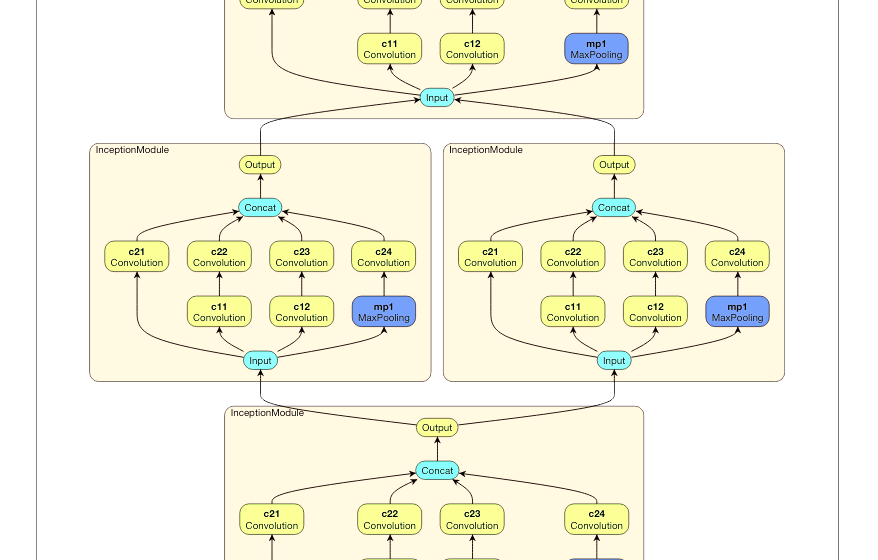GoogLeNet looks okay, I guess.
But you are right – the graph in the visualization is not hiding anything, i.e. composite nodes (metanodes) are shown expanded. That's why it looks impossible to read. It's overcrowded. But the hierarchy is visible – every metanode is posing as a separate box, so there is clear distinction of where module begins and where it ends. Compare that to the official GoogLeNet visualization, where there are shown only TF ops.

There should be a non-expanded view, but I don't think it would provide much for now. I would like to see something different...
Basically, the problem is that when the whole network is displayed, everything is small and unreadable. I would like to see coupling between cursor in the text and the viewport of the visualization. Simple example depicted on the picture above – if I would be over "im" Inception Module in the definition, only that portion of the visual graph would be shown. What do you think about that? But of course that would be useless for the renderings of the whole architecture...
BTW I have a feeling that U-Net would look ridiculous using current layout.
Also displaying shape of tensor on the edge is planned, but it would be better handled by the actual DL framework. But I am not settled on this yet...
Btw have you considered keras-graph-asci? :)




This is more like "feature request" or even an open-ended discussion (if you prefer to have it on email, mine is pmigdal@gmail.com).
In definition of layers you use hierarchical structures. However, in visualisation you don't - so even AlexNet looks heavy VGG16 - unreadable, and I don't dare thinking about GooglLeNet or ResNet.
How about exploiting this structure not only in definitions, but also - drawings. And passing "free hyperparameters" of layers, e.g. the number of channels. See e.g.:
from Deep learning for satellite imagery via image segmentation (by my colleague).
I am also concerned how to visualize networks (e.g. https://github.com/stared/keras-sequential-ascii as I was missing a tool for that) and I do have some experience in data visualization with D3.js (see http://p.migdal.pl/projects/); though I can be opinionated (see: Why do people draw neural networks upside down?, from which I learnt about your tool).
If you have goal to create neural network visualizations as informative as the one above, and as eye-candy as the one bellow, I would be happy to join forces with you (as clearly you have a lot of nice ideas)!